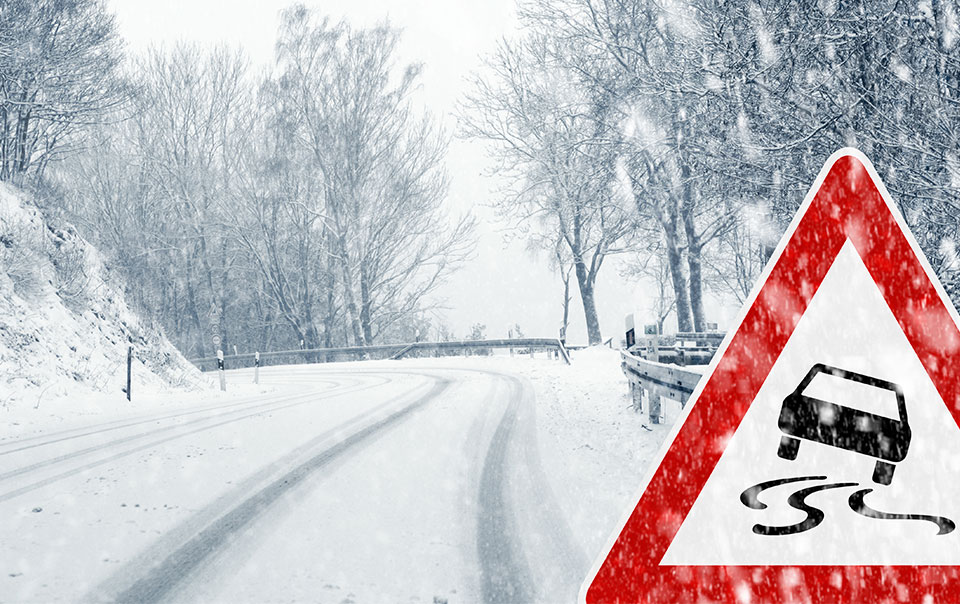Icy weather can create driving conditions in the winter months that are challenging and potentially dangerous. Black ice forms on roads and can create a hazard that is almost invisible. As temperatures approach freezing, icy conditions may develop, particularly on highways with higher elevation and bridges and overpasses. Adjusting your driving behavior to these conditions can help keep you safe on the road this winter, along with others around you.
Recognize Local Forecast
Changing winter weather may present hazards unconscious of local weather forecast to drivers. It is an important first step to know when ice may be present. If you plan to drive in an area where snow or ice may be possible, check conditions in advance. You can sign up for weather alerts to receive text messages and optional alerts for your area. Just make sure not to use your smartphone while driving, as you will want your full concentration on the road.
Be Aware of Other Drivers
Even if you know the area and know how to drive on icy roads, other drivers may not be as experienced or aware of potential hazards. To compensate for the increased stop time it may take you and other drivers to stop on slick surfaces, it is important to increase your following distance. Be aware that larger vehicles, such as tractor-trailers, may require even longer to stop in adverse weather conditions.
Practice Caution in All Vehicle Types
While four-wheel driving, all-wheel driving, electronic stability control and other safety features can help you drive safer in snow and ice, drivers may not be able to drive safely during snowy, slushy or icy conditions at regular speed limits. During ideal road and weather conditions, the National Safety Council recommends a three-second following distance and suggests slowing down and increasing following distances during adverse weather conditions or reduced visibility. You may want to consider whether snow tires are needed for the winter months depending on your vehicle and where you live.
Expect Changing Road Conditions
Even the day after a storm, as road crews work to clear snow and ice, road conditions can remain challenging. Due to elevation, road treatment, and other factors, the roads can be clear in one area and icy in another. Freezing and melting precipitation can create new dangers overnight. As air temperatures rise above 32 degrees, roadways may retain ice pockets that may pose a risk to drivers.
Know Where to Stop Safely
It can be a smart safety decision to decide to stay at home or get off the roads when conditions turn icy. Make sure you’re selecting a safe spot to wait for better conditions. Rest stops and parking lots are generally safer than the side of the road, where snowplows and other traffic can create hazards due to limited visibility.
Encourage Safe Driving
If you have friends or family planning to travel in the winter months, give them the opportunity to opt out of travel if conditions appear to be dangerous. Consider creating rules on driving in snow and ice for parents of new drivers and discuss with your teens the importance of changing their driving behavior during the winter months.
Icy conditions may be challenging for drivers, but you can take steps to stay safer and anticipate potential hazards. Know the local weather forecast, slow down your speed, increase the distance, allow extra travel time and be prepared for unexpected icy road conditions. For more ideas on safe driving this season, check out our winter driving safety tips.1
1www.travelers.com




